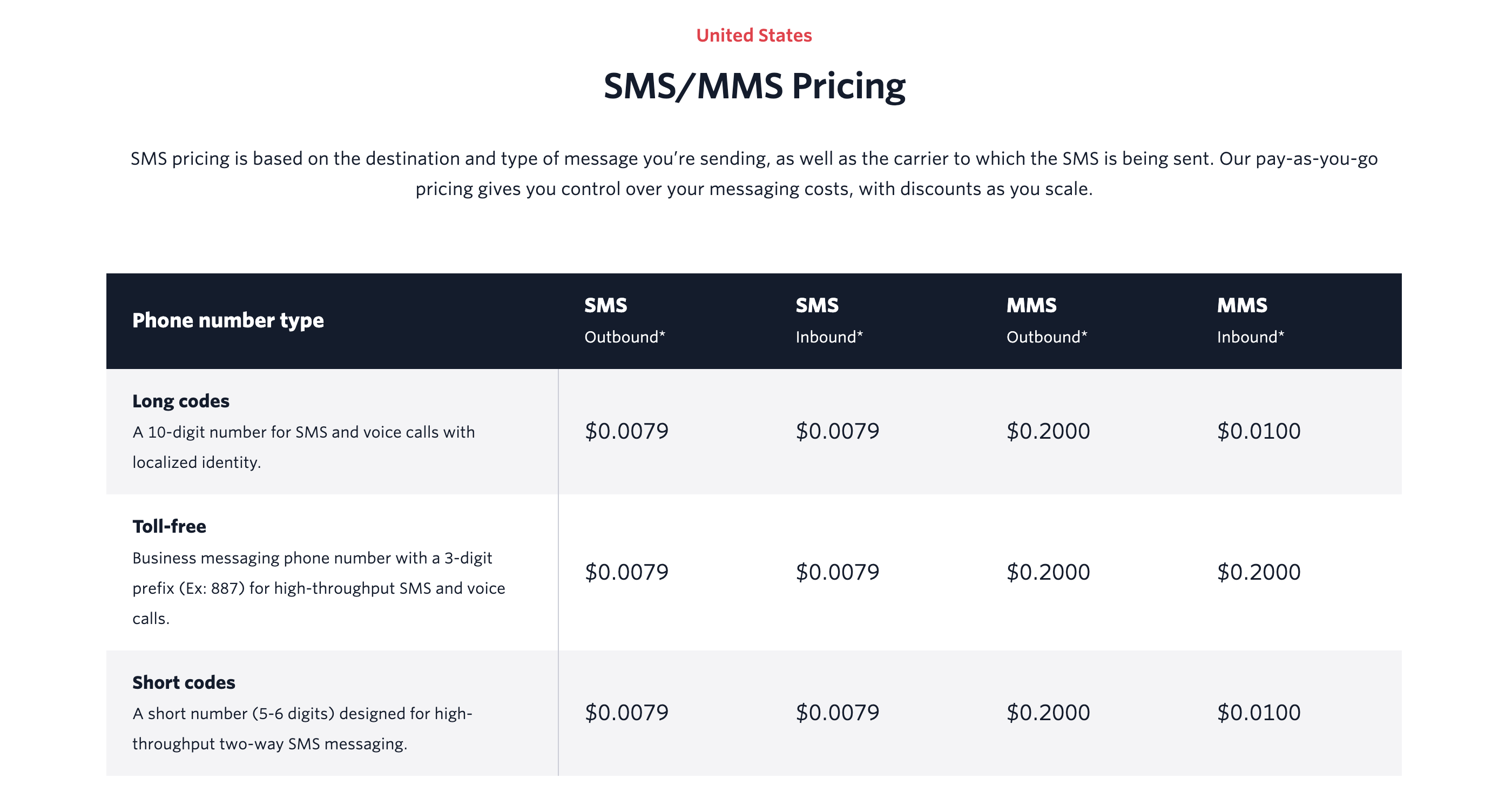SMS Marketing Pricing: 8 Companies to Compare
by Chandler Craig
If you’re in a buying position for SMS marketing software, you’re probably working within a departmental budget, meaning you’ll need to estimate your total cost across some timeframe to obtain a final sign-off on your purchase.
Glancing at product pricing pages in the SMS marketing space may overwhelm you with the sheer amount of pricing options and tiers. To help ease the stress of SMS marketing cost estimation, we’re going to walk through some popular products and how their pricing works.
The Pricing Model
Volume-based pricing tends to be the industry standard pricing model for SMS marketing platforms and message-sending platforms more broadly. There are several buyer-side and seller-side benefits to this. With volume-based pricing, the primary benefit to the buyer is the decrease in the price per unit as the total volume increases. In our case, the unit is a single SMS message sent or received by a company engaging in SMS marketing.
Marketing platforms like Twilio and MessageBird can offer volume-based pricing due to the non-linear nature of their operational costs. Your company doubling the number of messages sent with Twilio doesn’t double Twilio’s operational costs associated with your company’s account. Economies of scale and high fixed costs (e.g., infrastructure setup) to incremental cost (e.g., network carrier fees) ratio mean that the volume-based model often makes the most sense for SMS marketing pricing.
Understanding Volume Tiers
You can think of volume-based pricing as the wholesale approach. The more you buy, the less you pay per unit. Many major SMS marketing platforms offer multiple tiers of pricing for text messages based on volume ranges.
How they structure and price these volume ranges is one of the primary ways they compete for your business. For example, Platform X considers 1-50,000 monthly messages a small volume. In this range, the price per message is high, but the moment users cross over into their medium volume tier of 50,001-150,000 messages per month, the cost per message decreases drastically. The price per message doesn't fall very much in the large volume tier of >150k messages/month. With this pricing structure, Platform X competes for the business of companies likely to use a medium volume of messages.
8 SMS Marketing Platforms to Compare
Let’s compare some of the most popular SMS marketing platforms to compare their volume ranges and costs per message. Keep in mind that these are all United States-based prices. To find country-specific pricing, follow the link to each platform’s SMS pricing page below and download their international pricing documents.
1. Twilio
Pricing
- Small Volume (1-150,000 messages/month): $0.0079/message
- Medium Volume (150,001-300,000 messages/month): $0.0077/message
- Large Volume (300,001-500,000 messages/month): $0.0075/message
- Extra Large Volume (500,001-750,000): $0.0073/message
Pros
- Highly customizable and straightforward API
- Established product with great integrations
Cons
- There are cheaper options
2. Vonage
Pricing
- Sent messages (all volumes): $0.0077/message
- Received messages (all volumes): $0.0062/message
Pros
- Strong international support
- Reliable delivery
- Reasonable pricing for received messages
Cons
- UI is complex to navigate and unintuitive
- No volume tiers
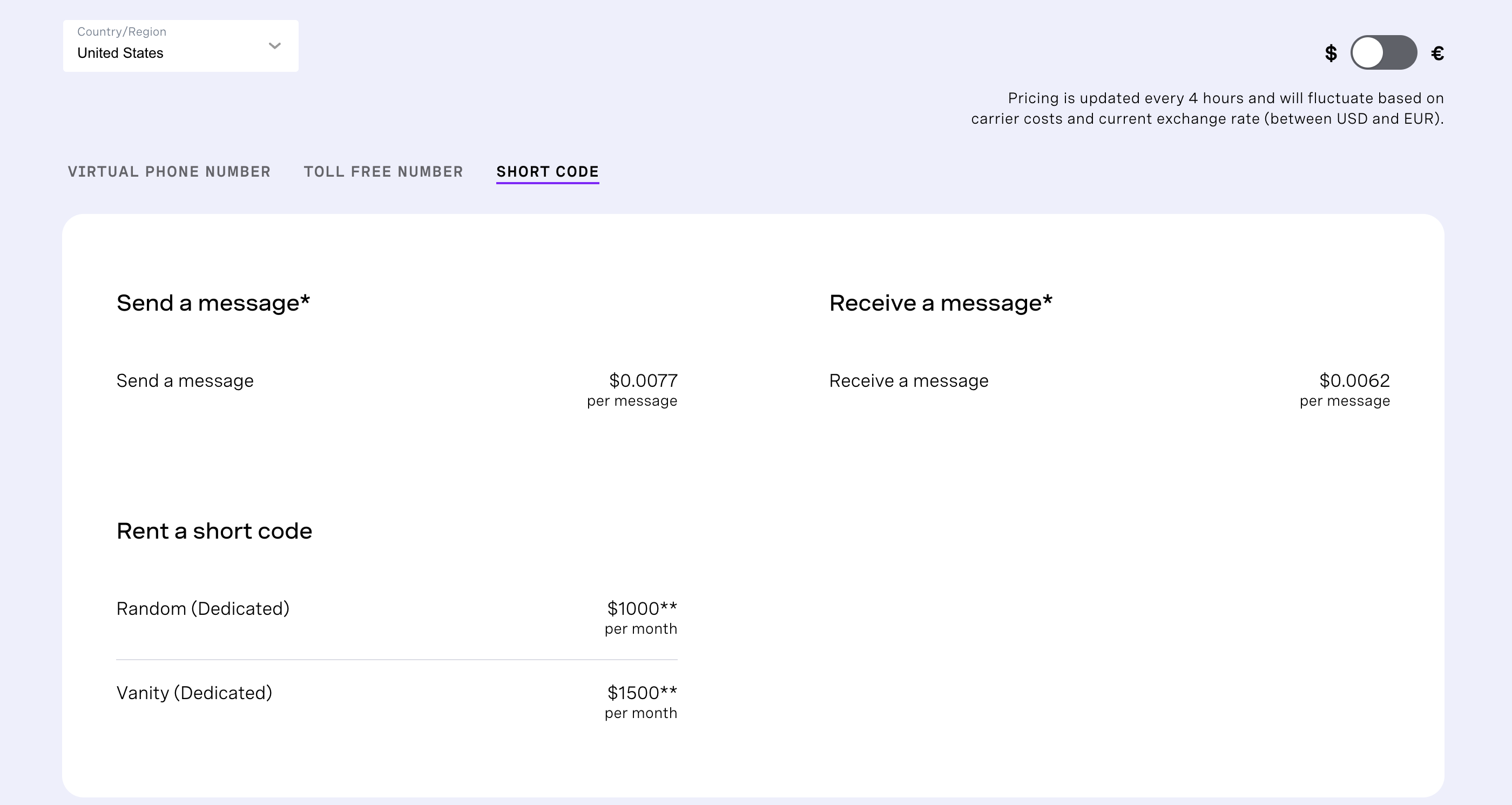
3. Plivo
Pricing
- Non-volume-based: $0.0055/message
- Volume-based: must contact sales for a quote ($1,000/month minimum commitment to qualify)
Pros
- More affordable than competitors
- Helpful customer support
Cons
- Comparatively limited documentation/resources (will need to lean on human support more than average)
- Although customer support is helpful, response times can be slow
- High monthly minimum to qualify for volume-based pricing
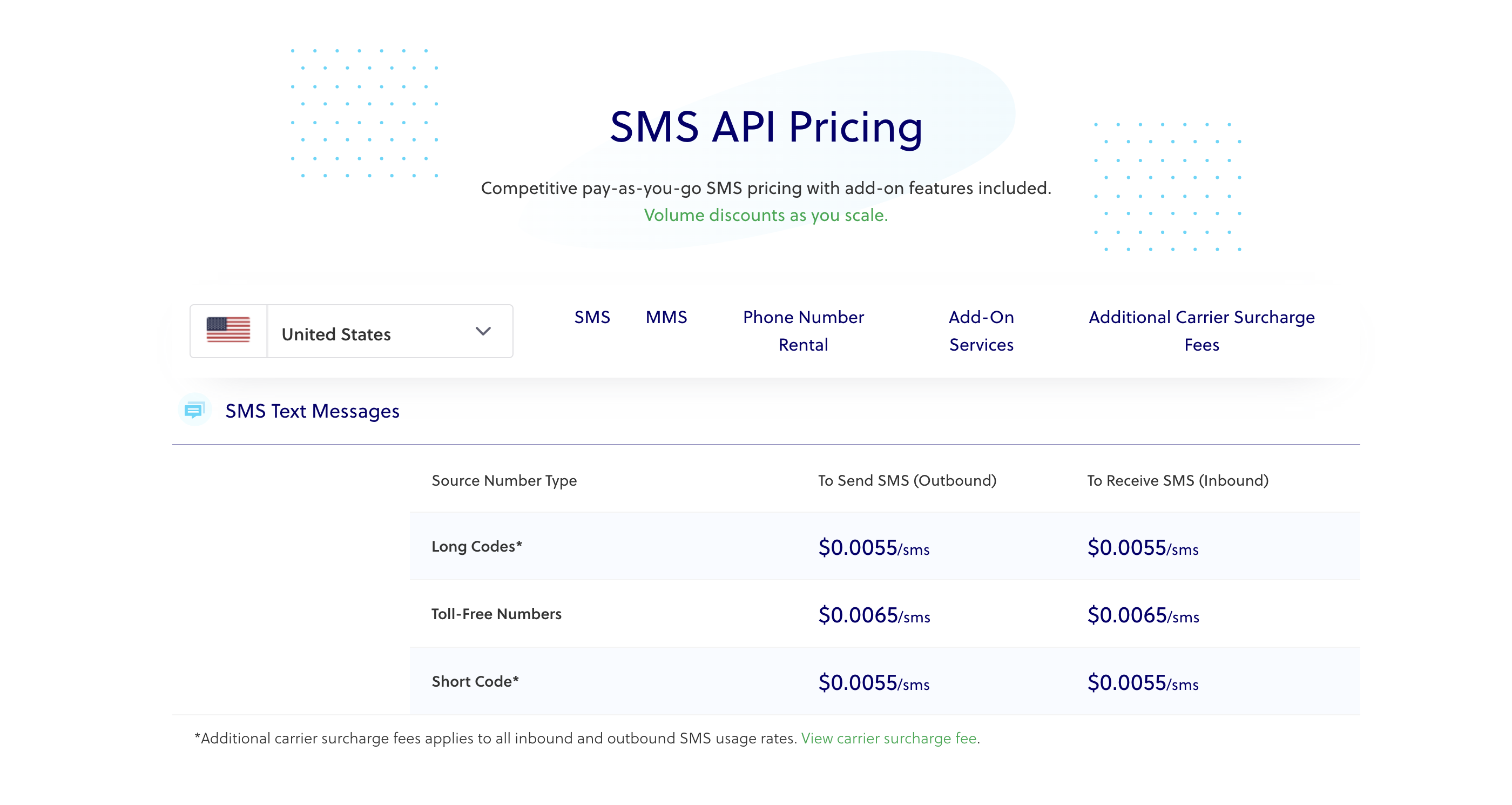
4. ClickSend
Pricing
- Small Volume (1-5,000 messages/month): $0.0251/message
- Medium Volume (5,001-50,000 messages/month): $0.018/message
- Large Volume (50,001-150,000 messages/month): $0.0121/message
- Extra Large Volume (150,000+ messages/month): $0.009/message
Pros
- Free inbound text messages for every tier
- Consistent delivery
Cons
- 2nd most expensive on the list if you plan on primarily sending messages as opposed to receiving them
- Difficult SMS templating interface
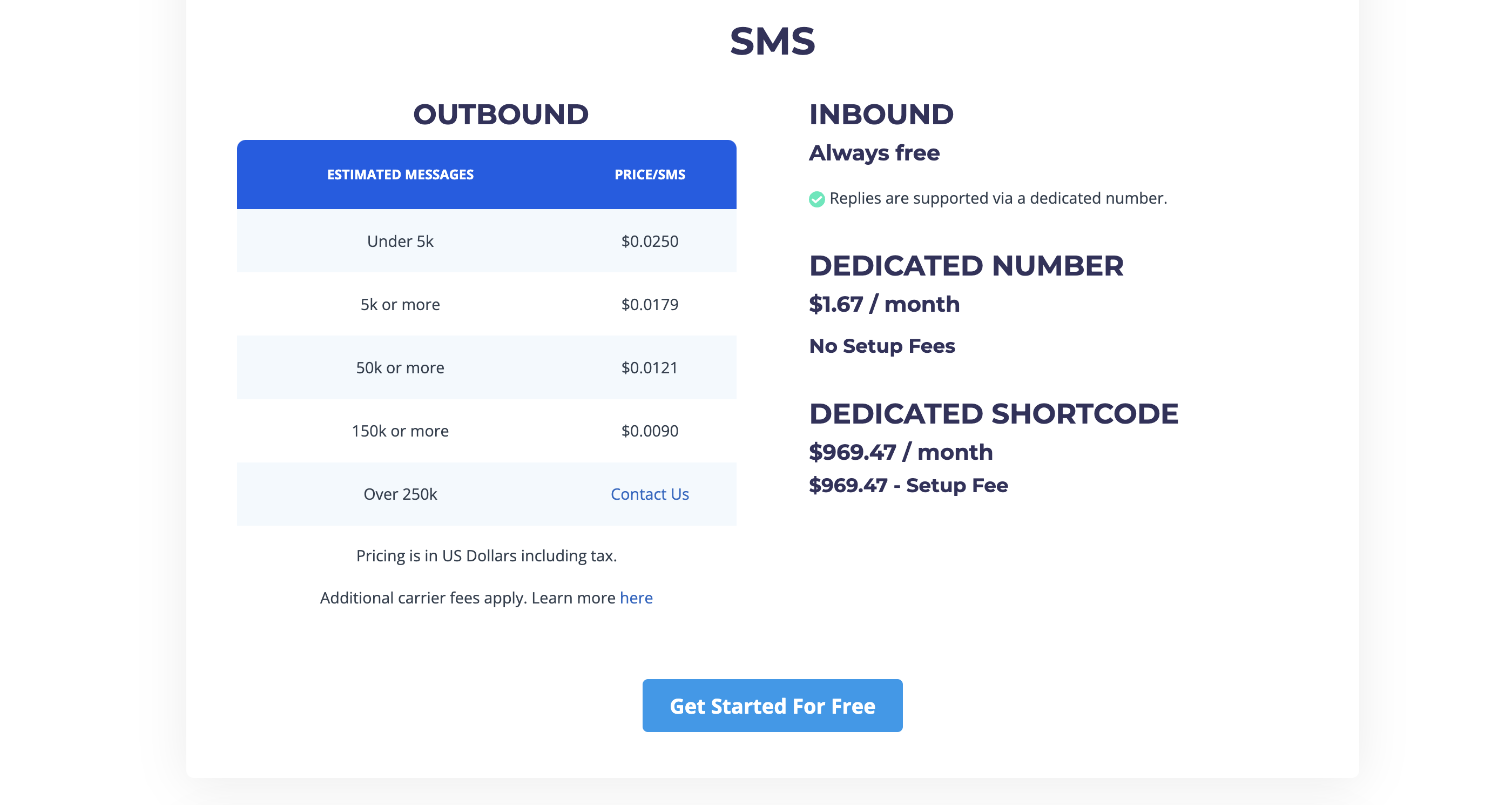
5. MessageBird
Pricing
- Non-volume-based: $0.0071/message
- Volume-based: must contact sales for a quote (unspecified minimum commitment to qualify)
Pros
- High message delivery rate
- Straightforward API
Cons
- Monthly minimum to qualify for volume-based pricing
- High SMS authentication costs

6. Bandwidth
Pricing
- Sent messages (all volumes): $0.005/message
- Received messages (all volumes): free
Pros
- Great pricing
- Dashboard is user-friendly
Cons
- Phone number porting is difficult
- Toll-free number setup is a pain
- No volume tiers
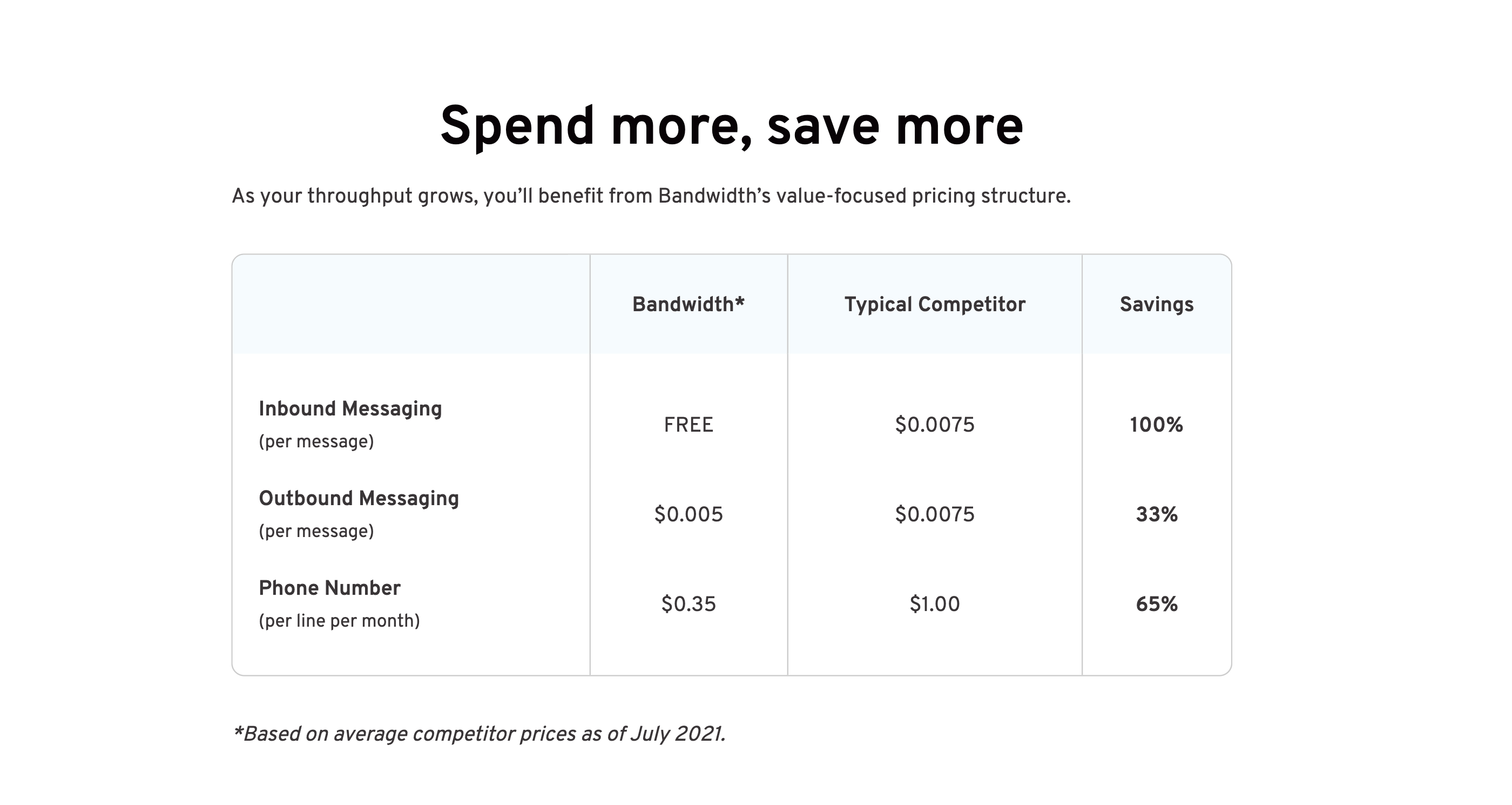
7. Sinch
Pricing
- Sent messages (all volumes): $0.0078/message
- Received messages (all volumes): $0.0078/message
Pros
- API supports a ton of languages
- Short-code management is more accessible than other platforms
Cons
- Expensive
- Focused on serving the EU and making accommodations for EU carriers (could be a pro if that’s where you live 😉)
- No volume tiers
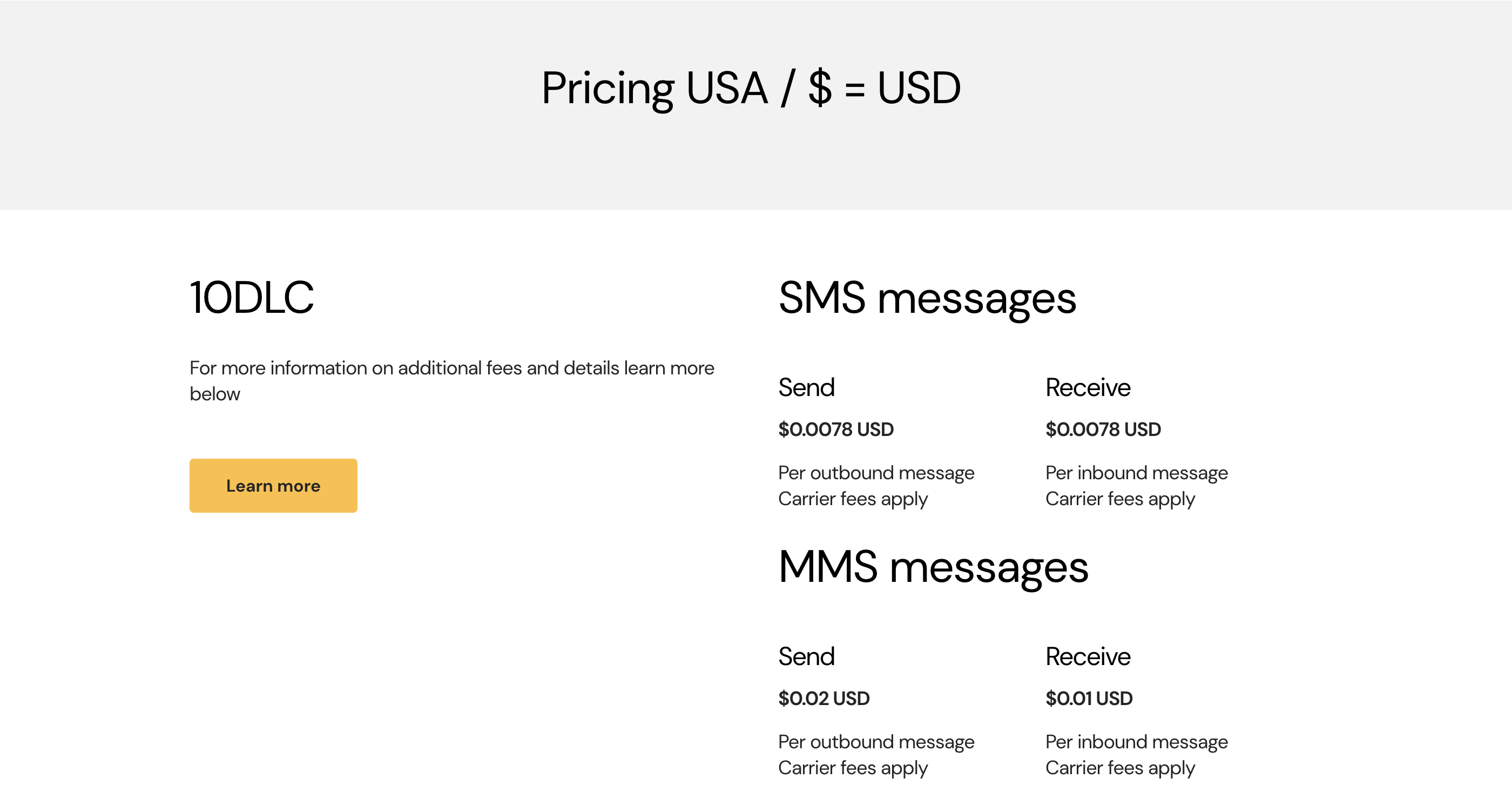
8. TextMagic
Pricing
- Sent messages (all volumes): $0.049/message
- Received messages (all volumes): $0.02/message
Pros
- Multiple number sending
- Great deliverability rates
Cons
- Most expensive on the list
- No volume tiers
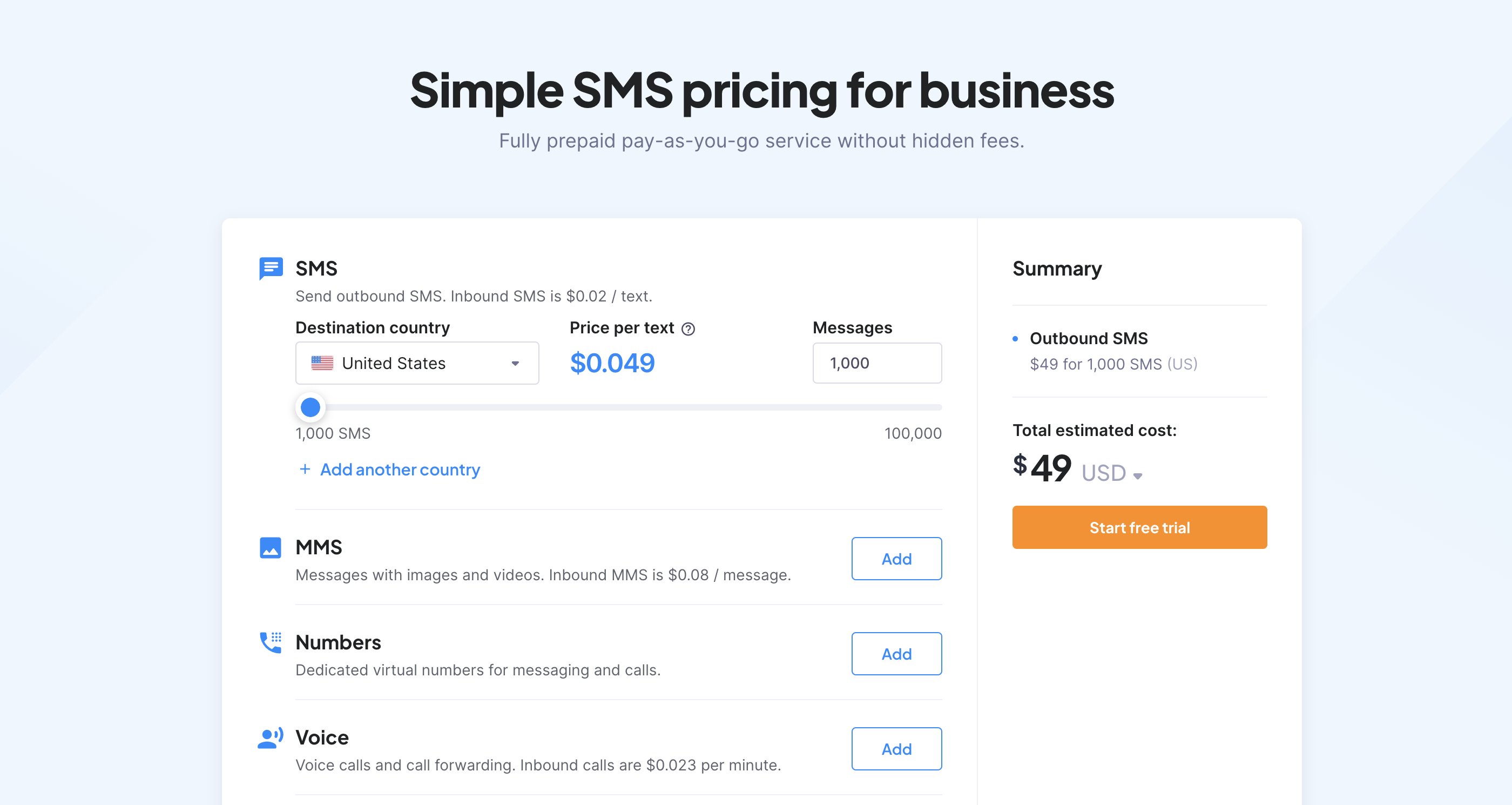
🏆 The Winner
Twilio SMS takes our top spot. It’s a reliable, industry-standard tool with fair pricing, solid deliverability, and excellent customer support. The API is easy to work with, and online documentation/resources are abundant. Sure, there are cheaper alternatives, but Twilio’s SMS marketing platform provides a premium product at a moderate price.
Promotional side-note: Dittofeed integrates with Twilio SMS and helps you template and schedule messages. Here’s our open-source codebase:
⭐️If you like what we’re doing, we’d love it if you gave us a GitHub star!⭐️
Additional Considerations
Long Codes, Short Codes, & Toll-free Numbers
Three kinds of phone numbers are used to send SMS: long, short, and toll-free. Pricing will vary depending on which one you use.
Long codes are standard numbers (10 digits in the US). They’re occasionally cheaper than short codes, but their throughput (aka the number of messages that can be sent or received in a given period) isn’t adequate for most mass messaging use cases.
Short codes are 5-6 digit numbers that are made for high throughput messaging for marketing campaigns and alerts. Because of this, more goes into a carrier approving short codes, which can sometimes be slightly more expensive on a per-message basis. However, they’re absolutely what you should be using for marketing and alerts.
Toll-free numbers are 1-800 numbers that also allow for high throughput. Theoretically, you could use these for marketing and alerts, but most companies choose not to due to popular perceptions about what 1-800 numbers are for. The general public tends to associate toll-free numbers with customer support, so that’s how companies continue to use them for SMS.
Carrier Fees
The major cell carriers in the US– T-Mobile, Verizon, and AT&T– all charge $0.003 for outbound SMS across all three phone number types (long, short, and toll-free), with T-Mobile being the only one also to charge $0.003 for inbound SMS. Some carriers charge no fees at all, and some charge more than the big three carriers. It’s important to note that carrier fees are on top of the SMS marketing costs associated with the platforms discussed above, so make sure to budget them into your total cost.
Sent & Received Pricing
Just like carriers, some SMS platforms charge more for messages their users send than for messages they receive. And some platforms don’t charge anything for received messages! It’s essential to consider your business use case before deciding on an SMS platform. If you’re running a marketing campaign that asks customers to text back and engage with your content, you’ll want to choose software that doesn’t penalize you.
Scheduling SMS Messages with Low-code Interfaces
One of the issues with SMS platforms is the technical knowledge required to operate their APIs. Low-code tools for creating, sending, and scheduling messages come in handy for non-technical team members. Using tools like Dittofeed or Pardot, which integrate with SMS marketing APIs like Twilio, non-technical people can automate the entire process of segmenting and messaging customers.
Pricing as you Scale
Although the price per unit can decrease as volume increases, every platform has a floor of how low they’re willing to go on cost per unit (some don’t have volume-based pricing at all). Eventually, when a company sending SMS gets large enough, building these systems in-house generally makes more sense. Luckily, there are open-source products that can decrease your SMS marketing costs and maintenance required to do this, making it much cheaper than using closed-source, third-party software.
Final Thoughts on the Importance of SMS Marketing
Google is finally cracking down on third-party cookies due largely to pressures from the EU’s General Data Protection Regulation (GDPR). Third-party cookies have been a significant way advertisers target their customer base for the past decade. Without them, marketers will need to turn to new tools.
SMS marketing campaigns and email marketing are effective ways to utilize first-party data to market and sell to your customers. They allow marketing teams to circumvent some negative impacts of diminished ad-targeting power.
First-party data is the future of marketing. We strongly recommend getting ahead of the curve while countries worldwide continue to impose new data regulations.
